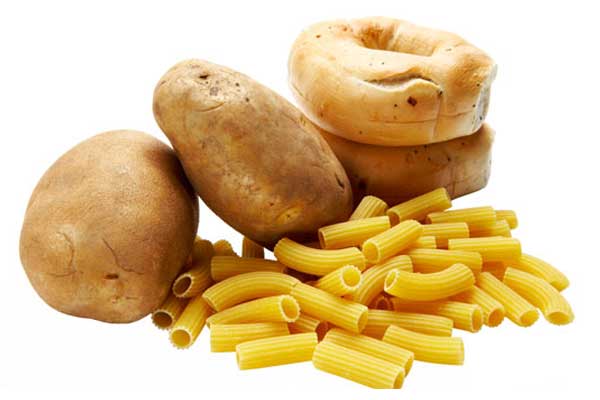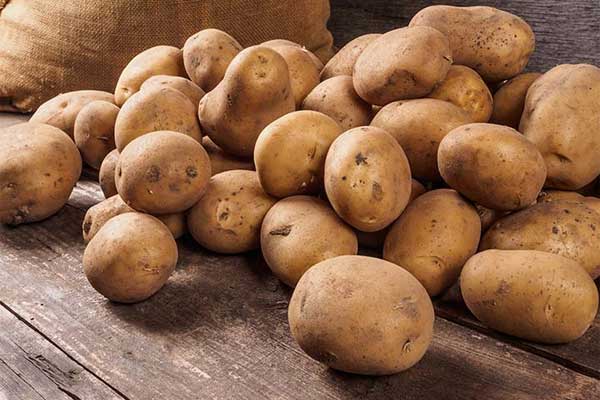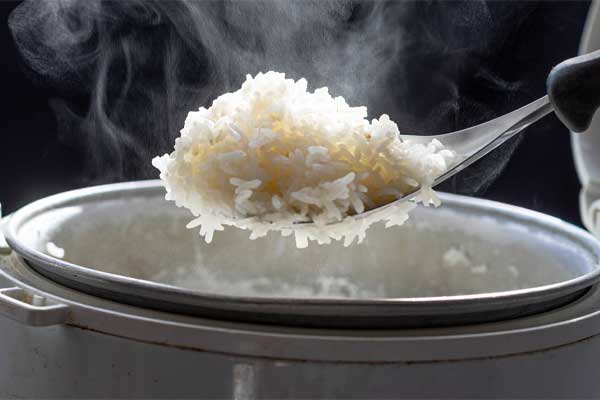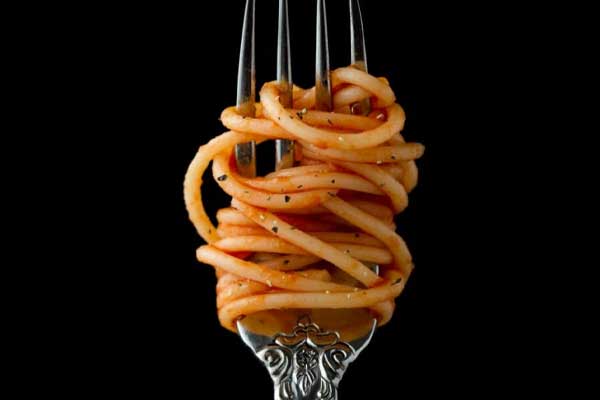Types of Foods with Starch – Why do we need starchy foods?
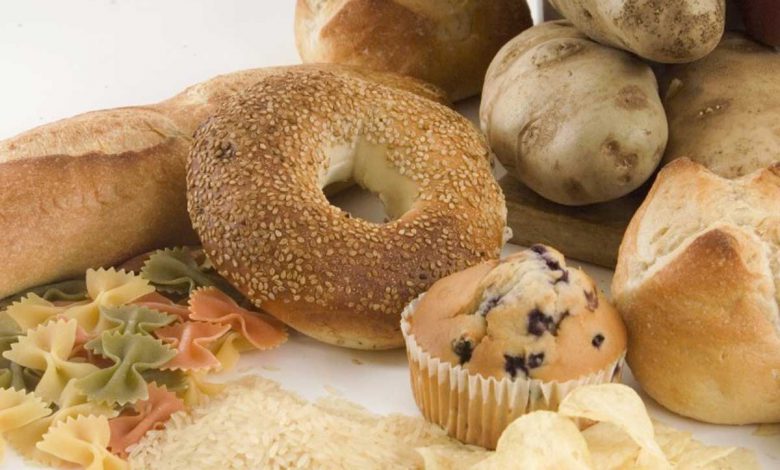
A variety of foods with starch They are our main source of carbohydrates and play an important role in our healthy diet. Starchy foods should make up more than a third of our food intake. We need to eat some starchy foods every day as part of a healthy and balanced diet. We can cook or toast these foods to suit both the taste and the amount of nutrients. So to know What foods does starch contain? Read this article to the end to get acquainted with the types of foods with starch.
Why do we need starchy foods?
Starchy foods are a good source of energy. In addition to starch, these substances also contain fiber, calcium, iron and B vitamins. Some people think that starchy foods are fattening, but each gram contains about less than half the calories in fat. Just be careful of the extra fats that are used when cooking and serving. Excess fat often from sauces and frying A variety of foods with starch They are obtained in oil. These are the things that increase the calorie content.
Whole grains, starchy foods and potatoes are good sources of fiber, especially when eaten skinned. Fiber refers to a set of compounds found in the cell wall of vegetables, fruits, legumes, and whole grains. Indigestible fiber helps other foods and waste products move more easily through the intestines. Potato peel, whole grain breads and breakfast cereals, brown rice and whole wheat pasta are good sources of this type of fiber.
Fiber can help keep our intestines healthy and allow us to feel full and eat less. Whole-grain starchy foods and potatoes eaten with the skin are good choices for fitness. Some types of fiber, found in fruits and vegetables such as apples, carrots, potatoes, barley and legumes, can be well digested and may help lower blood cholesterol.
Tips for consuming more types of food with starch
The following tips will help you increase the amount of starchy foods in your diet.
Breakfast
- Choose whole grains and mix some with your favorite healthy breakfast cereal.
- Plain porridge with fruit is known as a warming breakfast in winter.
- Whole barley with low-fat, low-sugar yogurt and fruit make for a great summer breakfast.
Lunch and dinner
- Try a baked potato for lunch, do not peel it for more fiber.
- Instead of chips or french fries, try making baked potatoes in the oven.
- Eat more rice or pasta and less sauce, but do not ignore vegetables.
- Try different breads such as whole grain breads and cereals. When you choose starchy foods, you also increase your fiber intake.
- Try brown rice because it is very high in fiber.
About the types of food with starch
Now we come to the part where we talk about the starchy foods so that we can take advantage of the nutrients and benefits of these foods to stay healthy.
Delicious breads
Bread, especially those made with whole-grain flour, brown cereals, and whole grains, is a healthy choice among starchy foods. Wholemeal and brown breads give us energy and contain B vitamins, vitamin E, fiber and a wide range of minerals. White bread also contains a wide range of vitamins and minerals but has less fiber than whole grain or brown breads. If you prefer white bread, look for higher fiber options.
Some people avoid bread because they are worried about wheat allergies or think that bread is fattening. However, the complete elimination of any food may mean that you are losing a wide range of nutrients that people need to stay healthy. If you are concerned about wheat allergies or intolerances, talk to your doctor. Needless to say, bread can be stored at room temperature.
Unique potatoes
Potatoes are an excellent choice of foods with starch and a good source of energy, fiber, B vitamins and potassium. Many people get a lot of vitamin C from potatoes. Although potatoes only contain small amounts of vitamin C, we usually eat a lot of them. Potatoes are cheap and can be a healthy choice for the diet.
Although potatoes are a type of vegetable, we mostly eat them as part of a starchy diet. Potatoes are a good source of carbohydrates in our diet. Potatoes will be a healthy choice when boiled, cooked, pureed or toasted with just a small amount of fat or oil and salt. French fries and other chips cooked in oil or served with salt are not healthy choices.
When cooking or serving potatoes, try to use small amounts of unsaturated oils such as olive or sunflower oil instead of butter. In mashed potatoes, use low-fat milk such as skim milk, 1% fat or skim milk instead of whole milk or cream. Do not peel the potatoes as much as possible to preserve more fiber and vitamins. For example, when you eat boiled or boiled potatoes, peel them.
If you boil a potato, some nutrients will leak into the water, especially if you peel it. To prevent this from happening, just use enough water to cover them and cook them only for as long as they need to. Store potatoes in a cool, dark, dry place to help them germinate. Do not eat green, damaged or sprouted pieces of potato as they may contain toxins that can be considered harmful.
Cereal products
Cereal products are known to be made from cereals. Whole grains can help your daily intake of iron, fiber, B vitamins and protein. Higher fiber options can also release energy more slowly. Wheat, barley, rye barley and rice are usually eaten as whole grains. This means that cereal products, including oats and oatmeal, such as porridge and whole wheat products, are healthy breakfast options. Barley, couscous, corn and tapioca are also healthy cereals. These products can also be high in salt and sugar. When buying cereals, look at food labels to compare different products.
Rice consumption
Rice is a great choice for a variety of starchy foods. Rice gives us energy, is low in fat, and is a low-cost food item. Types of towers include:
- Types of rice (white, basmati, long grain, brown, short grain, etc.)
- Couscous seeds
- Wheat groats
In addition to carbohydrates, rice and whole grains (especially coffee and whole grains) can contain the following:
- Fiber that can help the body get rid of waste products.
- B vitamins that help release energy from the food we eat.
There are a few things to keep in mind when storing and reheating cooked rice and cereals. This is important because spores and some other food poisoning insects can survive while cooking rice. Hogs can germinate if rice or cooked grains are left at room temperature. Bacteria multiply and produce toxins that can cause vomiting and diarrhea.
Reheating food will not eliminate toxins. Therefore, it is better to serve rice and cereals when they are freshly cooked. If this is not possible, refrigerate them within one hour of cooking and refrigerate until reheated or used in a cool container. It is important to throw away rice and cereals left overnight at room temperature.
If you are not going to eat rice immediately, put it in the refrigerator within an hour and eat it within 24 hours. The rice should be fully heated and brought to a temperature of 70 degrees Celsius for two minutes (or equivalent). So rice should not be heated more than once and should be discarded. Do not reheat the rice.
Pasta in the diet
Pasta is another starchy food for a healthy diet. This product is made of dough made from wheat and water and contains iron and B vitamins. Whole wheat or whole grains are healthier alternatives to regular pasta because they have more fiber. We digest whole grains more slowly, so they can help us feel full longer. Dry pasta can be stored in the cupboard and usually has a longer shelf life, while fresh pasta should be refrigerated and will have a shorter shelf life. Examine food packaging for further production or expiration dates and storage instructions.
Acrylamide in a variety of edibles with starch
Acrylamide is a chemical that occurs when many foods, especially starchy foods such as potatoes and bread, are cooked for a long time at high temperatures (frying, grilling and toasting). There is evidence that acrylamide can cause cancer. The Food Standards Agency offers the following tips to reduce the risk of acrylamide at home:
- When cooking, roasting or frying starchy foods such as potatoes, root vegetables and bread, choose a golden yellow or lighter color.
- Follow the cooking instructions carefully when frying or reheating packaged foods such as chips, fries and more. The instructions on the package are designed to cook the product properly. Starchy foods should not be cooked for long periods of time or at very high temperatures.
- While we can not completely avoid the dangers of acrylamide in food, it does help reduce the risk of cancer. This includes setting up meals based on starchy carbohydrates and getting 5 meals a day. Avoid frying or roasting potatoes and root vegetables. Instead, boil or steam them as this will reduce both the risk of acrylamide and the fat.
- Refrigerating raw potatoes can increase the overall level of acrylamide. Raw potatoes should ideally be stored in a cool, dark place at a temperature above 6 ° C.
last word
We introduced the types of starchy foods above and explained what nutrients these products contain. In fact, you can not live without starch. Because these substances are a large part of your diet and can help a lot to the overall health of your body. So it is important to adjust your diet on a daily basis, taking into account the caloric content of these products.

